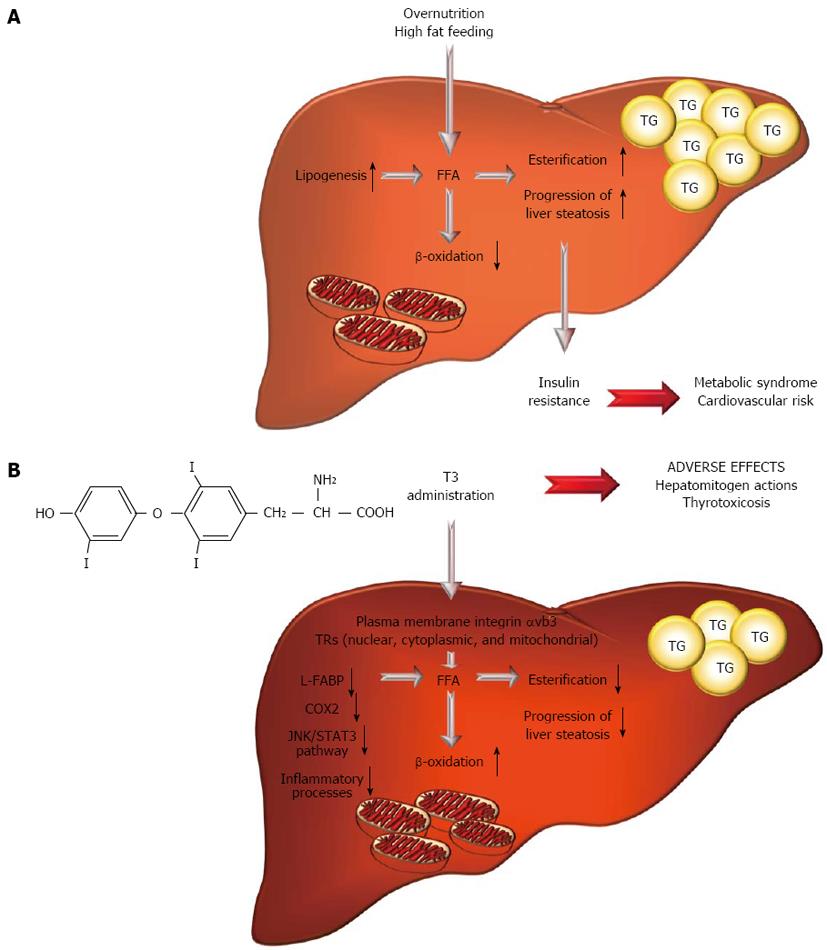Copyright
©2014 Baishideng Publishing Group Co.
World J Hepatol. Mar 27, 2014; 6(3): 114-129
Published online Mar 27, 2014. doi: 10.4254/wjh.v6.i3.114
Published online Mar 27, 2014. doi: 10.4254/wjh.v6.i3.114
Figure 1 Hepatic lipid partitioning and liver and systemic metabolic damages in nonalcoholic fatty liver disease (A) and a schematic representation of the anti-steatotic effect of 3,3’,5-triiodo-L-thyronine (B).
A: Hepatic lipid partitioning and liver and systemic metabolic damages in nonalcoholic fatty liver disease. Chronic overnutrition/hyperlipidemic feeding causes fat retention in hepatocytes that, in turn, results in alteration of fat uptake, de novo synthesis (lipogenesis) and oxidation with a significant imbalance of lipid homeostasis. This can subsequently induce insulin-resistance, metabolic syndrome and cardiovascular diseases; B: A schematic representation of the anti-steatotic effect of T3: An update. T3-administration associated adverse effects are also highlighted (for details see the text). T3: 3,3’,5-triiodo-L-thyronine; TRs: Thyroid hormone receptor isoforms; FFA: Free fatty acid; TG: Triglyceride; L-FABP: Liver-type fatty acid-binding protein; COX2: Cyclooxygenase 2; JNK: c-Jun N-terminal kinases; STAT3: Signal transducer and activator of transcription 3.
- Citation: Coppola M, Glinni D, Moreno M, Cioffi F, Silvestri E, Goglia F. Thyroid hormone analogues and derivatives: Actions in fatty liver. World J Hepatol 2014; 6(3): 114-129
- URL: https://www.wjgnet.com/1948-5182/full/v6/i3/114.htm
- DOI: https://dx.doi.org/10.4254/wjh.v6.i3.114









